Transcriptional profiling of ErbB signalling in mammary luminal epithelial cells--interplay of ErbB and IGF1 signalling through IGFBP3 regulation
- PMID: 20840765
- PMCID: PMC2946312
- DOI: 10.1186/1471-2407-10-490
Transcriptional profiling of ErbB signalling in mammary luminal epithelial cells--interplay of ErbB and IGF1 signalling through IGFBP3 regulation
Abstract
Background: Members of the ErbB family of growth factor receptors are intricately linked with epithelial cell biology, development and tumourigenesis; however, the mechanisms involved in their downstream signalling are poorly understood. Indeed, it is unclear how signal specificity is achieved and the relative contribution each receptor has to specific gene expression.
Methods: Gene expression profiling of a human mammary luminal epithelial cell model of ErbB2-overexpression was carried out using cDNA microarrays with a common RNA reference approach to examine long-term overlapping and differential responses to EGF and heregulin beta1 treatment in the context of ErbB2 overexpression. Altered gene expression was validated using quantitative real time PCR and/or immunoblotting. One gene of interest was targeted for further characterisation, where the effects of siRNA-mediated silencing on IGF1-dependent signalling and cellular phenotype were examined and compared to the effects of loss of ErbB2 expression.
Results: 775 genes were differentially expressed and clustered in terms of their growth factor responsiveness. As well as identifying uncharacterized genes as novel targets of ErbB2-dependent signalling, ErbB2 overexpression augmented the induction of multiple genes involved in proliferation (e.g. MYC, MAP2K1, MAP2K3), autocrine growth factor signalling (VEGF, PDGF) and adhesion/cytoskeletal regulation (ZYX, THBS1, VCL, CNN3, ITGA2, ITGA3, NEDD9, TAGLN), linking them to the hyper-poliferative and altered adhesive phenotype of the ErbB2-overexpressing cells. We also report ErbB2-dependent down-regulation of multiple interferon-stimulated genes that may permit ErbB2-overexpressing cells to resist the anti-proliferative action of interferons. Finally, IGFBP3 was unique in its pattern of regulation and we further investigated a possible role for IGFBP3 down-regulation in ErbB2-dependent transformation through suppressed IGF1 signalling. We show that IGF1-dependent signalling and proliferation were enhanced in ErbB2-overexpressing cells, whilst loss of ErbB2 expression by siRNA silencing reduced IGF1 signalling. Furthermore, IGFBP3 knockdown resulted in basal ERK and Akt activation in luminal epithelial cells and increased invasiveness and anchorage-independent colony formation in SKBR3 cells.
Conclusions: These data show IGFBP3 as a negative regulator of transformation and that its down-regulation enhances IGF1-dependent signalling. They also show that ErbB2 can up-regulate IGF1-dependent signalling, possibly via the regulated expression of IGFBP3.
Figures
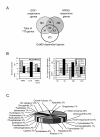
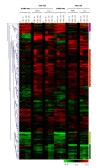
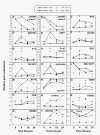


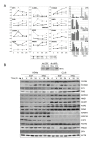
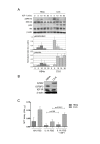
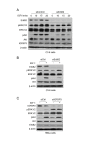
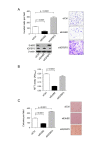
Similar articles
-
Effects of ErbB2 Overexpression on the Proteome and ErbB Ligand-specific Phosphosignaling in Mammary Luminal Epithelial Cells.Mol Cell Proteomics. 2017 Apr;16(4):608-621. doi: 10.1074/mcp.M116.061267. Epub 2017 Feb 7. Mol Cell Proteomics. 2017. PMID: 28174229 Free PMC article.
-
cDNA microarray analysis of genes associated with ERBB2 (HER2/neu) overexpression in human mammary luminal epithelial cells.Oncogene. 2003 May 1;22(17):2680-8. doi: 10.1038/sj.onc.1206349. Oncogene. 2003. PMID: 12730682
-
Epidermal growth factor receptor, c-erbB2 and c-erbB3 receptor interaction, and related cell cycle kinetics of SK-BR-3 and BT474 breast carcinoma cells.Cytometry. 2001 Aug 1;44(4):338-48. doi: 10.1002/1097-0320(20010801)44:4<338::aid-cyto1125>3.0.co;2-v. Cytometry. 2001. PMID: 11500850
-
The relative role of ErbB1-4 receptor tyrosine kinases in radiation signal transduction responses of human carcinoma cells.Oncogene. 2001 Mar 15;20(11):1388-97. doi: 10.1038/sj.onc.1204255. Oncogene. 2001. PMID: 11313882 Review.
-
Expression and function of ErbB receptors and ligands in the pituitary.Endocr Relat Cancer. 2011 Oct 27;18(6):R197-211. doi: 10.1530/ERC-11-0066. Print 2011 Oct. Endocr Relat Cancer. 2011. PMID: 21917845 Free PMC article. Review.
Cited by
-
Testing breast cancer serum biomarkers for early detection and prognosis in pre-diagnosis samples.Br J Cancer. 2017 Feb 14;116(4):501-508. doi: 10.1038/bjc.2016.433. Epub 2017 Jan 12. Br J Cancer. 2017. PMID: 28081538 Free PMC article. Clinical Trial.
-
Serum insulin-like growth factor 1 correlates with the risk of nodal metastasis in endocrine-positive breast cancer.Curr Oncol. 2013 Aug;20(4):e283-8. doi: 10.3747/co.20.1380. Curr Oncol. 2013. PMID: 23904766 Free PMC article.
-
HER2 is not a cancer subtype but rather a pan-cancer event and is highly enriched in AR-driven breast tumors.Breast Cancer Res. 2018 Jan 30;20(1):8. doi: 10.1186/s13058-018-0933-y. Breast Cancer Res. 2018. PMID: 29382369 Free PMC article.
-
The role of the insulin-like growth factor-1 system in breast cancer.Mol Cancer. 2015 Feb 15;14:43. doi: 10.1186/s12943-015-0291-7. Mol Cancer. 2015. PMID: 25743390 Free PMC article. Review.
-
A requirement for Nedd9 in luminal progenitor cells prior to mammary tumorigenesis in MMTV-HER2/ErbB2 mice.Oncogene. 2014 Jan 23;33(4):411-20. doi: 10.1038/onc.2012.607. Epub 2013 Jan 14. Oncogene. 2014. PMID: 23318423 Free PMC article.
References
Publication types
MeSH terms
Substances
LinkOut - more resources
Full Text Sources
Molecular Biology Databases
Research Materials
Miscellaneous

